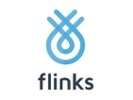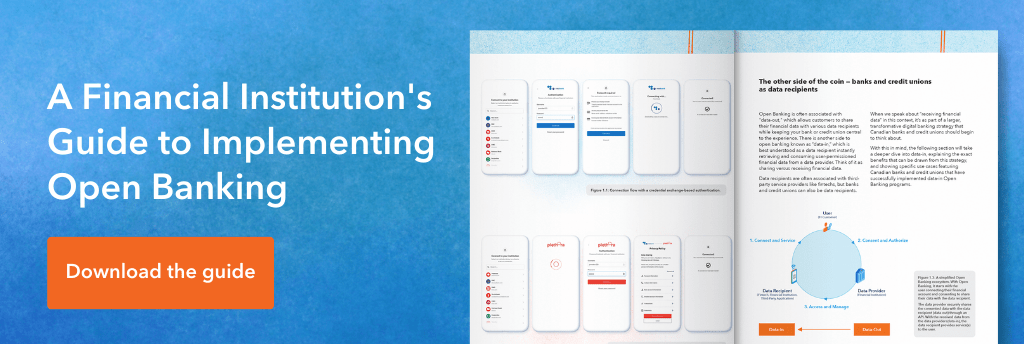
Flinks gives you the power to build the future of finance. Connect, enrich and utilize financial data to delight your customers with amazing products.
Open Banking Glossary: An A-to-Z of Industry Terminology
Open banking is changing finance by opening up the industry and putting power into the hands of consumers. And since it’s a niche so closely linked to fintech, its industry-speak is filled with not only financial terms and abbreviations—but also important information about technical aspects and the technology that’s in place.
Unfortunately, even if you’ve been paying close attention, it’s difficult to keep up with. So, we created an index of terms to make the language of North American open banking accessible to anyone.
Keep on scrolling to check out our glossary of the most common open banking terms to help you make sense of it all. From A2A to IBV, here’s what it all means.
Quick links
A B C D E F G H I J K L M N O P Q R S T U V W X Y Z
A
Account to Account (A2A)
Account to account transfers are cardless payments processed directly from one bank account to another (such as credit transfers, immediate payments, and pre-authorized debits).
Application Programming Interface (API)
Application program interface (API) is the technology of choice for mature open banking ecosystems. It’s a connection between different software or devices that specifies how these components should interact.
Account Verification
Account verification is an open banking use case that facilitates user onboarding. Through this, users can confirm ownership of their financial accounts while accessing account details.
Accreditation
Accreditation is a key element of the Open Banking Environment. It’s a verification and validation process whereby a financial institution determines which data consumers can be part of their open banking ecosystem.
Authentication
All connections with financial institutions require an authentication process, which is handled by the data connectivity provider or through OAuth if permitted.
B
Bring Your Own Data (BYOD)
Bring Your Own Data (BYOD) is a term used to describe solutions that layer on top of your existing data infrastructure, so you don’t need to displace or rebuild any of your existing systems and workflows.
For example, if you’re already set up with Plaid, Yodlee, or Finicity, Flinks Enrichment can process, organize, and analyze data coming from these sources and consolidate it within a single feed.
C
Cash flow-based lending
A cash flow-based lending model assesses a borrower’s creditworthiness and ability to repay based on patterns in their income and expenses. Open banking enables financial service providers to gain the transactional data they need to perform this type of analysis.
Consent Management
Consent management is a feature of the Open Banking Environment. It provides end users with visibility and control over which third parties can access their financial data.
Customer segmentation
Customer segmentation is the exercise of grouping customers based on characteristics they have in common. With open banking, financial service providers can more easily understand their customers’ financial profiles and segment them accordingly.
D
Data Connectivity
Data connectivity is a way for end users to safely share their financial data with third parties, with their consent. The data connectivity provider acts as a trusted intermediary, ensuring that information is collected from the data provider and delivered to the data consumer.
Data Consumer
Data consumers are third parties with whom end users have consented to share their financial data. In turn, data consumers use it as part of their onboarding, verification, underwriting, or personalization processes.
Data Enrichment
Data enrichment is the process of transforming raw data into understandable, usable, and valuable information.
Data Provider
Data providers are organizations—such as financial institutions—that produce and store financial data based on their end users’ activities.
E
Embedded Finance
Embedded finance is a trend in which non-financial service providers can offer a growing array of financial services.
End User
In an open banking ecosystem, end users are the owners of financial data empowered to share it with the third parties of their choosing. It’s important to note that businesses, not just consumers, can be end users.
F
Fintech
Fintech is a compound word for “financial technology.” It’s a catch-all term for any technology that’s used to augment, streamline, digitize or disrupt traditional financial services.
I
Instant Bank Verification (IBV)
Instant Bank Verification (IBV) provides lenders with real-time transactional data, as well as KYC information and account details, sourced directly from borrowers’ financial accounts.
K
Know Your Customer (KYC)
KYC is the process performed by financial service providers who need to verify their potential customers’ personal and financial information before fully onboarding them.
Open banking simplifies this process by enabling end users to instantly share KYC-related information through data connectivity.
O
Open Authorization (OAuth)
OAuth is an open-standard authorization protocol or framework that describes how unrelated servers and services can safely allow authenticated access to their assets without actually sharing the initial, related, single login credential.
In authentication parlance, this is known as secure, third party, user-agent, delegated authorization.
Open Banking Environment (OBE)
The Open Banking Environment is North America’s first bank-centric open banking infrastructure offering.
Financial institutions using OBE manage an open banking ecosystem by enabling their end users to securely share and manage their financial data with accredited data consumers through API.
P
Pre-Authorized Bank Debits (PADs)
Pre-authorized debits (PADs) are a convenient way to pay bills and make payments automatically. Instead of waiting for its customer to send a payment, a company or financial institution is given permission to debit a customer’s bank account when the payment is due.
Pre-authorized debits are sometimes called direct debit, pre-authorized chequing (PAC), pre-authorized withdrawals or pre-authorized payments (PAPs).
Point of Sale (POS)
The time and place where a retail transaction is completed.
T
Transactional data
Transactional data refers to the information recorded from a consumer or a business’ financial transactions.
U
User-Permissioned Financial Data
User-permissioned financial data refers to the information an end users has consented to share with a third party through data connectivity.
You might also like

How Mitsubishi HC Capital Canada Embraced Digital Transformation With Flinks
Find out how Mitsubishi HC Capital Canada automated financial reporting and risk management processes, without writing a single line of code.

Let’s Open the Door to What’s Coming: Announcing a New Fundraise
We’ve built Flinks Enrichment to make it easy for financial service providers to use financial data—wherever their data is coming from, and no matter their technical know-how.
